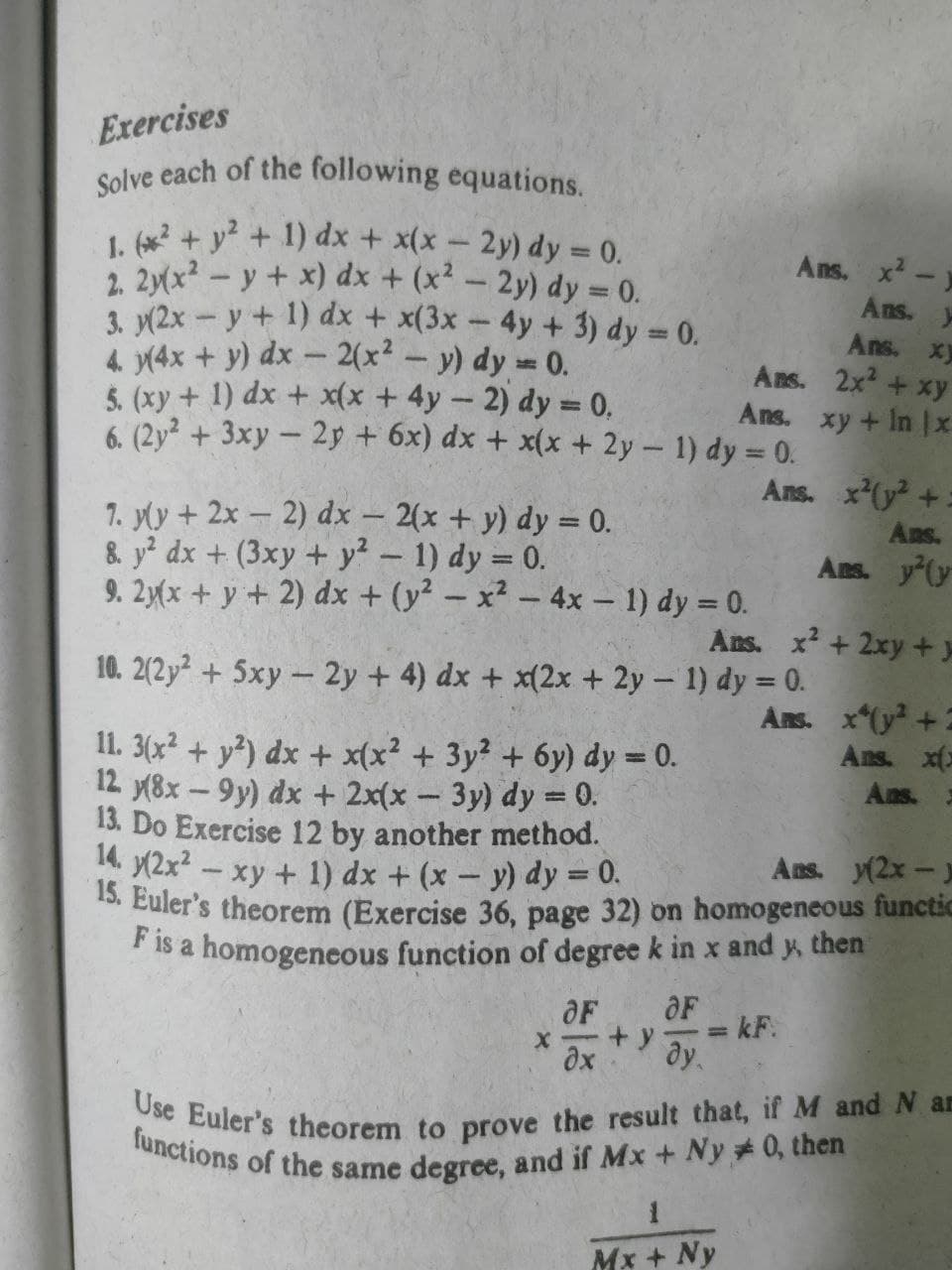Algebra for College Students
10th Edition
ISBN:9781285195780
Author:Jerome E. Kaufmann, Karen L. Schwitters
Publisher:Jerome E. Kaufmann, Karen L. Schwitters
Chapter13: Conic Sections
Section13.1: Circles
Problem 48PS
Related questions
Question
use determination of

Transcribed Image Text:functions of the same degree, and if Mx + Ny #0, then
Use Euler's theorem to prove the result that, if M and N an
Solve each of the following equations.
Exercises
1. (x2 + y+ 1) dx + x(x- 2y) dy 0.
2. 2yx? - y + x) dx + (x² – 2y) dy = 0.
3. y(2x - y+ 1) dx + x(3x-4y + 3) dy = 0.
4. y(4x + y) dx - 2(x² – y) dy =0.
5. (xy+ 1) dx + x(x +4y- 2) dy = 0,
6. (2y + 3xy- 2p + 6x) dx + x(x+ 2y- 1) dy = 0.
Ans.
Ans.
Ans. xy
Ans. 2x +xy
Ans. xy + In x
Ans. x(y +.
1. yly + 2x – 2) dx - 2(x + y) dy = 0.
&. y dx + (3xy + y? - 1) dy = 0.
9. 2y(x + y + 2) dx + (y² – x² – 4x - 1) dy = 0.
Ans.
Ans. y (y
Ans. x + 2xy+y
10. 2(2y + 5xy - 2y + 4) dx + x(2x + 2y- 1) dy = 0.
Ans. x(y+2
Ans. x(x
11. 3(x2 + y?) dx + x(x? + 3y² + 6y) dy = 0.
12 8x-9y) dx + 2x(x - 3y) dy = 0.
13. Do Exercise 12 by another method.
. y(2x2 - xy + 1) dx + (x- y) dy = 0.
5. Euler's theorem (Exercise 36, page 32) on homogeneous functic
* Is a homogeneous function of degree k in x and y, then
Ans.
%3D
Ans. y(2x-)
OF
OF
+ y
dy.
%3D
dx
Mx + Ny
Expert Solution
This question has been solved!
Explore an expertly crafted, step-by-step solution for a thorough understanding of key concepts.
Step by step
Solved in 3 steps with 3 images

Recommended textbooks for you

Algebra for College Students
Algebra
ISBN:
9781285195780
Author:
Jerome E. Kaufmann, Karen L. Schwitters
Publisher:
Cengage Learning

Elements Of Modern Algebra
Algebra
ISBN:
9781285463230
Author:
Gilbert, Linda, Jimmie
Publisher:
Cengage Learning,

Algebra for College Students
Algebra
ISBN:
9781285195780
Author:
Jerome E. Kaufmann, Karen L. Schwitters
Publisher:
Cengage Learning

Elements Of Modern Algebra
Algebra
ISBN:
9781285463230
Author:
Gilbert, Linda, Jimmie
Publisher:
Cengage Learning,